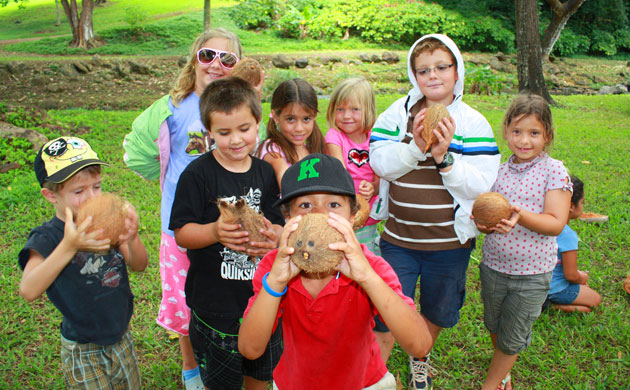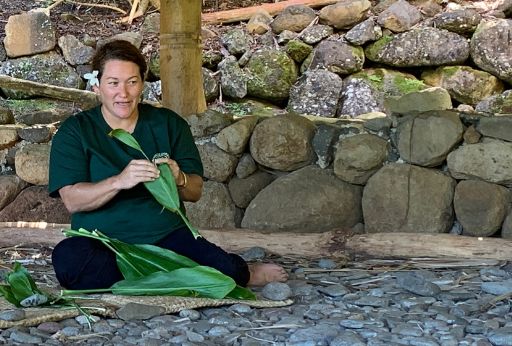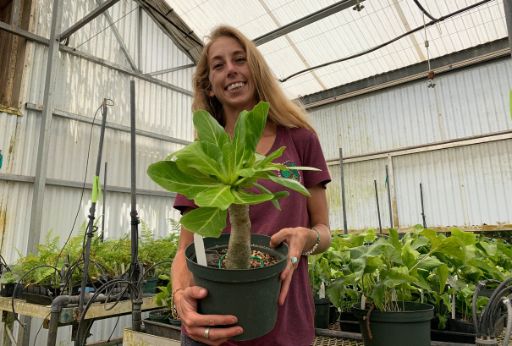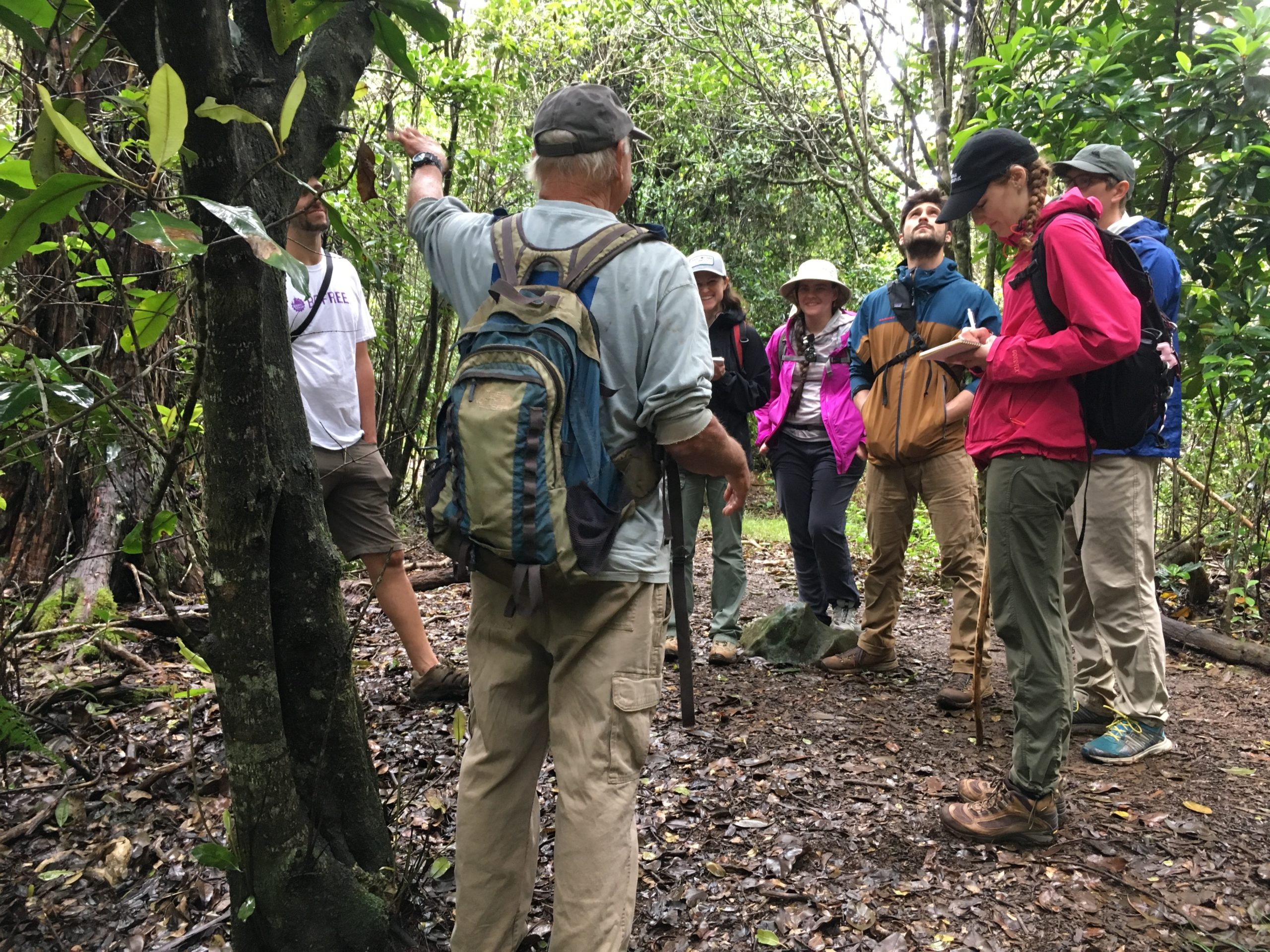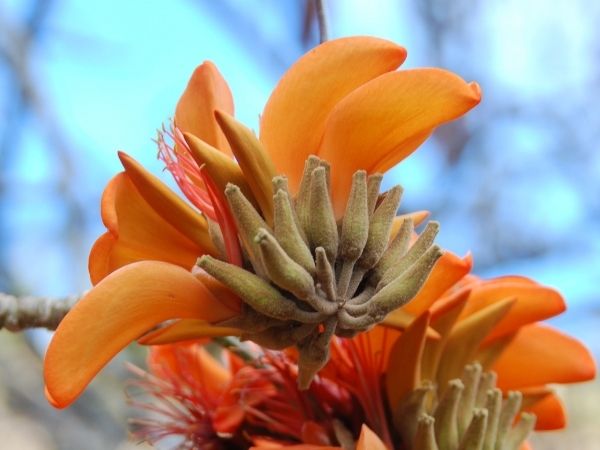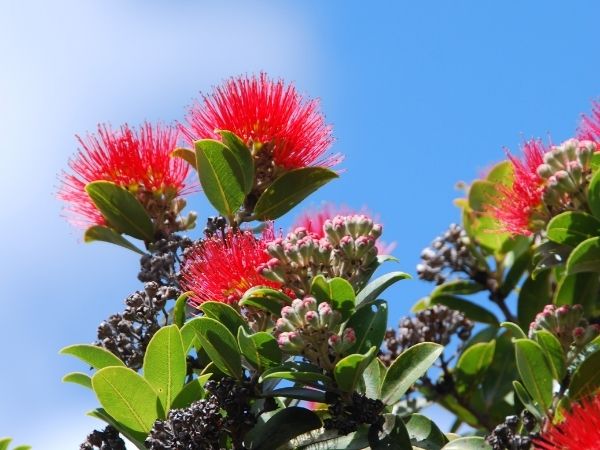Tropical Plant Database - Plant Details
Zingiber officinale
Click on any heading above to view more information about this plant
Conservation Status
- IUCN: data deficient
- USFWS: None
Marcus M. Reidenberg, MD, Prof. of Pharmacology, Medicine & Public Health, Weill Med Col. of Cornell Univ. speaking about the medicinal properties of Zingiber officinale
Family: ZINGIBERACEAE
Genus: Zingiber
Species: officinale
Species Author: Roscoe
Vernacular: Ginger
Genus: Zingiber
Species: officinale
Species Author: Roscoe
Vernacular: Ginger
Ginger has a perennial rhizome or stem which creeps and increases in size underground. Roots grow from the bottom of the rhizome and shoots from the upper surface. In the spring it sends up from its rhizome a green reed-like stalk about 2 feet high, with narrow lanceolate leaves. These leaves die back after the growing season. The flowering stalk rises directly from the rhizome with the leaves and consists of an oblong spike with scalloped green bracts. From each bract one or more white or yellowish-green flowers is produced, blooming for several days. The underground rhizome is the source of commercial "ginger root".
(Grieve, M. 1931. A Modern Herbal.)
(Vermeulen, N. 1999. Encyclopaedia of Herbs.)
(Grieve, M. 1931. A Modern Herbal.)
(Vermeulen, N. 1999. Encyclopaedia of Herbs.)
Ginger root helps relieve the dizziness, sweating, nausea, and vomiting that comes from motion sickness or seasickness. It can also ease sore throats, headaches, ulcerative colitis, some types of menstrual and arthritis pain, and fevers and aches caused by colds and flu. It may also help to relieve symptoms of depression.
Once the rhizome is cut, the active chemicals in the plant, such as zingiberene, bisabolene, gingerol, and shogoal, begin to lose potency. Herbal product companies market Ginger as extract, tinctures, capsules, or oils, in order to prevent the loss of these chemicals. Use products that clearly state on the label the amount of ginger you will be getting per dose. Another good source of Ginger is crystallized Ginger.
You can also buy fresh Ginger root and prepare your own tea by steeping half a handful sliced, or half a teaspoon grated, washed, and unpeeled tuber in hot water, or pour a pint of boiling water over an ounce of sliced rhizome. Let the tea steep for 15 minutes or so, and drink 2 cups of this a day.
(Grieve, M. 1931. A Modern Herbal.)
(Vermeulen, N. 1999. Encyclopaedia of Herbs.)
Once the rhizome is cut, the active chemicals in the plant, such as zingiberene, bisabolene, gingerol, and shogoal, begin to lose potency. Herbal product companies market Ginger as extract, tinctures, capsules, or oils, in order to prevent the loss of these chemicals. Use products that clearly state on the label the amount of ginger you will be getting per dose. Another good source of Ginger is crystallized Ginger.
You can also buy fresh Ginger root and prepare your own tea by steeping half a handful sliced, or half a teaspoon grated, washed, and unpeeled tuber in hot water, or pour a pint of boiling water over an ounce of sliced rhizome. Let the tea steep for 15 minutes or so, and drink 2 cups of this a day.
(Grieve, M. 1931. A Modern Herbal.)
(Vermeulen, N. 1999. Encyclopaedia of Herbs.)
Ginger is now cultivated in great quantities in Jamaica and comes in United States dried and preserved. The root from the West Indies is considered the best. Also imported from Africa, there are several varieties known in commerce. Jamaica or White African is a light-brown color with short rhizome, very pungent. Cochin has a very short rhizome, coated red-grey color. "Coated or Uncoated" is the trade term for rhizome with peel on or skinned. Green Ginger is the immature undried rhizome. Preserved Ginger is made by steeping the root in hot syrup and then crystallizing it. Ratoon is uncultivated Ginger.
(Grieve, M. 1931. A Modern Herbal.)
(Vermeulen, N. 1999. Encyclopaedia of Herbs.)
(Information for this species compiled and recorded by Camelia Cirnaru, NTBG Consultant.)
(Grieve, M. 1931. A Modern Herbal.)
(Vermeulen, N. 1999. Encyclopaedia of Herbs.)
(Information for this species compiled and recorded by Camelia Cirnaru, NTBG Consultant.)
Ginger is said to be a native of China and India. It is cultivated in West Indies, Jamaica, Africa.
(Grieve, M. 1931. A Modern Herbal.)
(Vermeulen, N. 1999. Encyclopaedia of Herbs.)
(Grieve, M. 1931. A Modern Herbal.)
(Vermeulen, N. 1999. Encyclopaedia of Herbs.)
Ginger has been used in cooking for more than 4,000 years. Because people liked its sharp and spicy flavor so much and found it to be warming and good for stomach pains, it was transplanted worldwide by explorers in warm, tropical places.
(Grieve, M. 1931. A Modern Herbal.)
(Vermeulen, N. 1999. Encyclopaedia of Herbs.)
(Grieve, M. 1931. A Modern Herbal.)
(Vermeulen, N. 1999. Encyclopaedia of Herbs.)
Ginger was introduced into the Americas after the discovery of that country by the Spaniards. Francisco de Mendosa transplanted it from the East Indies into Spain, where Spanish-Americans cultivated it vigorously, so that in 1547 they exported 22,053 cwt. into Europe.
(Grieve, M. 1931. A Modern Herbal.)
(Vermeulen, N. 1999. Encyclopaedia of Herbs.)
(Grieve, M. 1931. A Modern Herbal.)
(Vermeulen, N. 1999. Encyclopaedia of Herbs.)
- 034366 - collected by David H. Lorence in 1999
- 054668 - collected by Relio Lengsi in 2006
- 049622 - collected by David H. Lorence in 2008
- 058724 - collected by David H. Lorence in 2010
- 034885 - collected by F. Sohl in 2023
We currently have 5 herbarium specimens for Zingiber officinale in our collection. Click on any specimen below to view the herbarium sheet data.
.svg)







